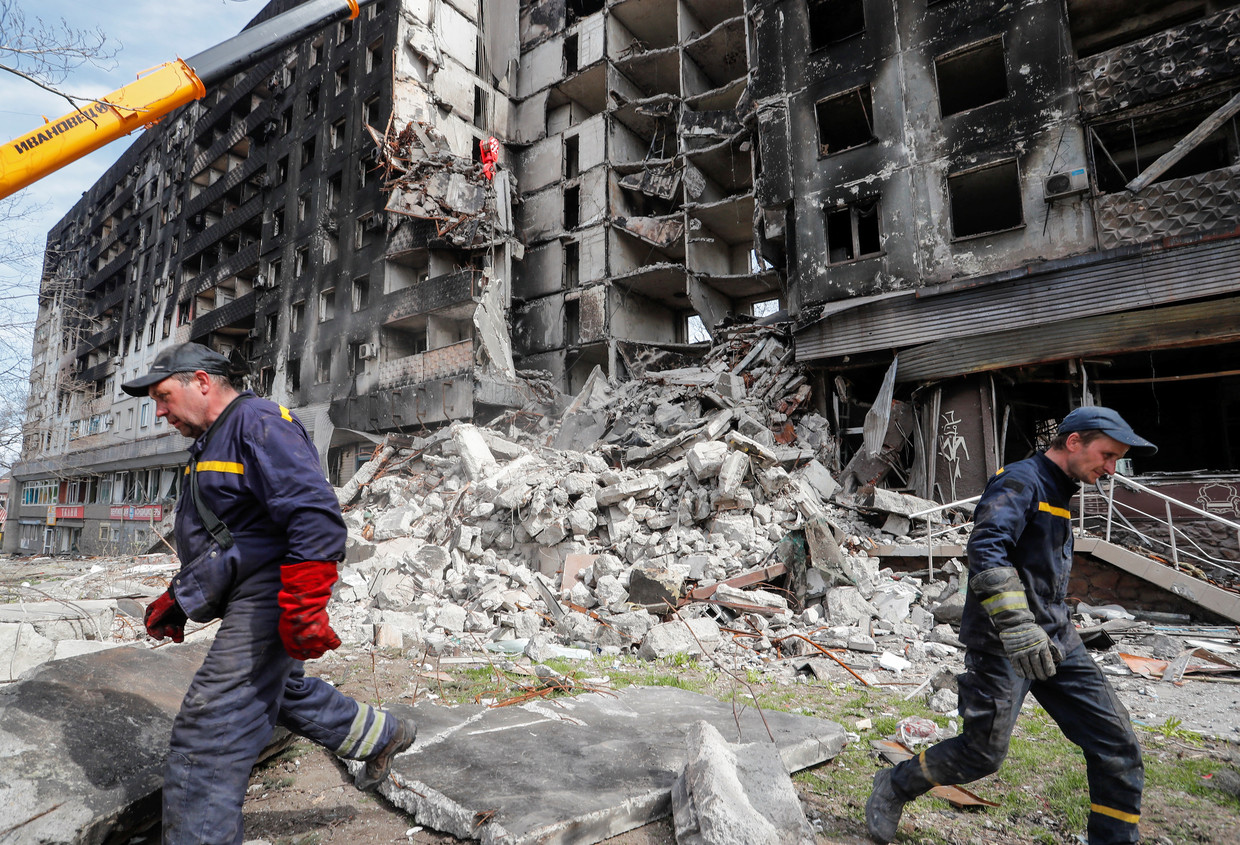
The last Ukrainian defenders withdrew to the large complex of the steelworks at Azovstal and were surrounded there. They had the opportunity to surrender from Russia until 12:00 (Netherlands time) on Sunday. When the alarm went off, there were no reports of a possible surrender.
The fall of Mariupol is an important strategic step for Russia. It thus gained complete control of the Sea of Azov, and established a land bridge between occupied Crimea and Luhansk and Donetsk, the breakaway pro-Russian republics of eastern Ukraine.
The fall of Mariupol is the first serious victory for the Russians since they switched to offensive in southern and eastern Ukraine. They will now undoubtedly want to continue this offensive. If Mariupol’s stiff resistance is a measure of the course for the rest of the war, Russia will have to be patient and pay a heavy price for more territory.

in the line of fire
Due to its strategic importance, Mariupol has been in the line of fire since the start of the war – on February 24 – bombing was reported as early as the first day of the invasion. Beginning on Wednesday 2 March, Russian forces surrounded the city.
A few days later, the warring factions made a first attempt to open a “humanitarian corridor” through which civilians could leave the city and relief supplies could reach the city. Time and time again those attempts failed. The two sides accused each other of violating the armistice.
The first successful evacuations occurred just two weeks later. However, not everyone was able to leave the city safely. Buses were stopped or confiscated, and civilians were stuck transporting them at Russian army checkpoints. Ukraine accuses Russian forces of sending 40,000 civilians by force from Mariupol to Russia they are gone† On March 28, according to the mayor, 160,000 residents were still incarcerated in the city.
Having completed the siege, the Russian army did not immediately enter Mariupol. The city was constantly bombarded with bombs, missiles and aerial bombardment. No distinction was made between military and civilian targets. One of the important objectives of the devastating bombardment seemed to break the morale of the population.
Mass graves
During the bombing, a children’s hospital attached to the maternity hospital and a Stage affected. Under the theater were hiding about a thousand civilians, of whom 300 were killed, according to the Ukrainians.
Mayor Boichenko estimated on April 12 that about 21,000 civilians had died. Ukrainian President Zelensky spoke of “tens of thousands of dead” in Mariupol the day before. These numbers cannot be independently confirmed, and the mayor has also admitted that it is difficult to determine the exact number of victims. The dead are buried in mass graves or temporary cemeteries where they died, because it was too dangerous to regularly bury each dead under constant bombardment.
The question is how much reliable information will appear about what happened in the coastal city. After the Potia massacre, Zelensky warned: “We are receiving reports from Mariupol that the situation is much worse there,” but Russia will not allow independent monitors to investigate what war crimes were committed there and who committed them. Now that the city is in the hands of Russian forces, Russia can hide the facts or blame the Ukrainians, without checking them.
Historical significance
The fall of Mariupol was a long time coming. Zelensky said on March 27 that he was in daily contact with the city’s defenders. “I said to them, ‘If you think you should get out, that it’s the right thing, and that you can survive, then do it. I understand.'” They refused, according to Zelensky, because they did not want to leave their dead and wounded behind in the city.

Besides strategy, the downfall of Mariupol is also historically important† In May 2014, pro-Russian separatists briefly took control of the city. However, thanks to the uprising of workers in the main steel mills and the opposition of the notorious Azov Battalion, the city returned to the control of the government in Kyiv.
The Russians would publish widely about the fall of Mariupol (population 450 thousand), the second and largest Ukrainian city they occupied in this war. It was the fall of the only other significant city, Kherson (300 thousand inhabitants, on March 2), more than a month ago. Now that the battle of Mariupol was over, the way was cleared for Zaporizhia, the city where many civilians fled from Mariupol.
Timeline of the siege of Mariupol
• February 24: The start of the Russian invasion of Ukraine. 26 people were wounded in the bombing of Mariupol.
2 March: Mariupol is besieged by the Russian army. According to Mayor Boichenko, the water supply has been cut off and the Russians are doing their best to prevent civilians from escaping the city.
March 9: After a Russian bombing of a cemetery, local authorities decide to bury the dead in a mass grave. At least three people were killed in a Russian bombing of a children’s hospital and a maternity hospital.
• March 15: Departure from Mariupol towards Zaporizhzhya 4 thousand cars carrying about 20 thousand civilians. Ukrainian convoy loaded with aid does not reach the city.
• March 16: a Russian air raid on a theater where more than a thousand civilians were sheltered from the bombing, according to the local authorities.
• March 18: Separatists seized Mariupol airport from the Ukrainians. The mayor reports that fighting has reached downtown.
• March 20: The Ukrainian government rejected the Russian ultimatum to lay down its arms that night.
• April 5: Pro-Russian separatists appoint their own mayor for Mariupol.
• April 7: The separatists reported that they had captured the center of Mariupol. The final battles will take place in the port and at the steel mill.

“Infuriatingly humble social media buff. Twitter advocate. Writer. Internet nerd.”








